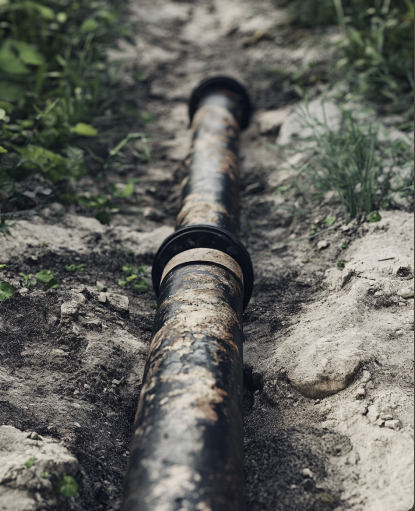When purchasing a home or land, understanding the precise boundaries of your property is essential. Whether you’re planning a new fence, expanding your garden, or simply clarifying your property limits, knowing where your land begins and ends can prevent costly disputes with neighbors and ensure compliance with zoning laws. One key element in locating these boundaries is the often-overlooked iron stake, a metal marker buried at the corners of many properties. Here’s a comprehensive guide on how to locate your property lines effectively.
Why Knowing Your Property Lines is Crucial
Before diving into the process, let’s explore why it’s so important to know your property boundaries:
- Home Improvements: Whether you’re installing a fence, building a shed, or even planting trees, knowing where your property lines are helps prevent future issues.
- Legal Disputes: Misunderstanding boundaries can lead to disputes with neighbors over shared spaces like driveways, gardens, or structures.
- Compliance with Zoning Laws: Local regulations may restrict how close to the property line you can build, making it crucial to know exactly where the line lies.
- Resale Value: When selling your property, clear property lines help avoid complications and facilitate smoother transactions.
Understanding these factors underscores why pinpointing your property lines, especially through iron stakes, is a valuable task.
Step-by-Step Guide to Finding Your Property Lines
Step 1: Review Your Property Deed
Your property deed is the first document you’ll want to consult. It includes a legal description of your property boundaries, often described in one of two ways:
- Metes and Bounds: This system describes the property boundaries using physical landmarks, directions, and distances.
- Lot and Block: Typically used in subdivisions, this system refers to your lot’s specific number within a platted area, making it easier to locate in relation to other properties.
In many cases, the deed will also reference iron stakes or other physical markers set during the property’s initial survey.
Step 2: Locate an Official Property Survey
A property survey is the most accurate representation of your land’s boundaries. If you don’t already have one, your local county clerk or records office may have it on file. The survey will display:
- Exact property dimensions: These will help you pinpoint where to look for iron stakes.
- Existing structures: Including houses, sheds, and driveways.
- Property markers: Such as iron stakes or corner pins, which serve as permanent boundary markers.
This document will be crucial in physically locating your property’s boundaries.
Step 3: Use a Metal Detector to Find Iron Stakes
Surveyors often install iron stakes or rods at the corners of a property to mark its boundaries. Over time, these stakes may become buried under dirt, grass, or landscaping, but they can still be found using a metal detector. Here’s how:
- Obtain a Metal Detector: Rent or borrow a metal detector from a hardware store or equipment rental service.
- Refer to the Survey: Use the distances provided in your property survey to estimate where the stakes should be.
- Search Methodically: Slowly sweep the metal detector over the ground, covering a broad area in the corners or near the boundary lines indicated in the survey.
- Careful Digging: Once you detect metal, gently dig to uncover the iron stake. Stakes are usually buried just below the surface but could be deeper depending on landscaping changes.
What if You Can’t Find the Iron Stakes?
If the iron stakes are missing, corroded, or never placed, you may need to hire a professional surveyor to install new ones. While this can be costly, it provides the most accurate result and is legally recognized.
Step 4: Use GPS and Online Mapping Tools (Supplemental Method)
In addition to iron stakes, modern technology can help you estimate your property lines more easily. Geographic Information System (GIS) tools and mobile apps can give you a general idea of your property boundaries:
- GIS Mapping Systems: Many counties provide public GIS maps that show approximate property lines.
- Mobile Apps: Tools like LandGlide, OnX Hunt, and Regrid allow you to access public property records and see an estimate of your boundary lines. While not as precise as iron stakes, these tools can be helpful when surveying your land.
Step 5: Mark Your Property Lines
After locating your iron stakes, you can use visible markers like flags or temporary fencing to outline your property boundaries. This is especially useful when planning home improvements or resolving disputes with neighbors.
Step 6: Hiring a Professional Surveyor
If you still can’t find your property lines or if you need an updated survey, hiring a professional surveyor is the best course of action. A licensed surveyor will:
- Install New Iron Stakes: If none exist or if old stakes are missing.
- Provide an Updated Survey: This legally recognized document can be crucial when making property improvements or selling the property.
- Ensure Accuracy: A professional surveyor’s work ensures compliance with zoning laws and helps avoid disputes down the road.
Final Thoughts: Knowing Your Property Lines
Finding your property lines can be a straightforward process if you have the right tools and information. Iron stakes serve as permanent markers that ensure the most accurate representation of your property’s boundaries. By following these steps—reviewing your deed and survey, using a metal detector, and leveraging GPS technology—you can confidently identify your property lines and avoid costly mistakes. If all else fails, hiring a professional surveyor guarantees peace of mind.
Owning land comes with great responsibility, and knowing where your property begins and ends ensures you can enjoy it to the fullest without legal complications or neighbor disputes.




